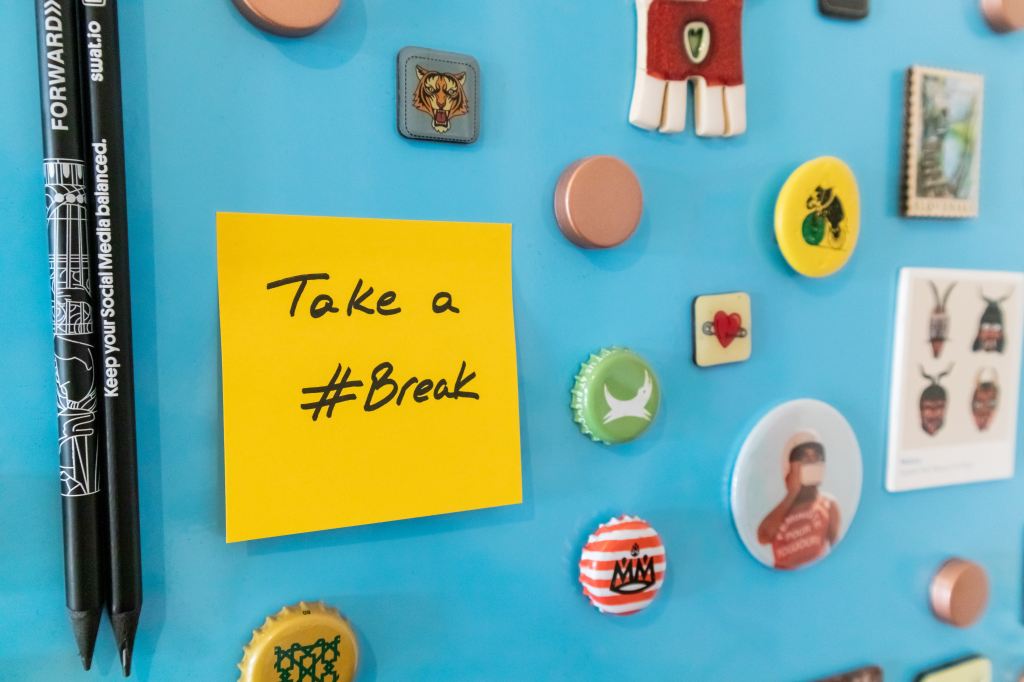In this series, editors share their experiences, insights, and tips on the practical aspects of working as an editor. In some of our previous “Editors Advise” instalments, our contributors have shared their thoughts on various topics, including professional development and training for editors, and whether to be a generalist or specialist. For this edition, five editors share some of their strategies and tools for aiding productivity.

What are your favourite apps, tools, or strategies (for editing and non-editing tasks) that help with your productivity?
Raya P. Morrison, freelance editor and editor-in-chief of Blood & Bourbon
We’re inching closer to the end of the year, so admin tasks are on my mind. It’s a good idea to see how you did and what you can improve on at the end of each year so you can grow your business in a healthy way.
I use Erin Brenner’s (Right Touch Editing) spreadsheet for tracking clients and income. I attended her presentation at the Editors Canada annual conference a few years ago and loved the way she organized clients into categories and created a pie chart from that to track if you need more stable income. I added tabs for taxes in the sheet so I know how much I owe the Canada Revenue Agency at the end of each quarter.
For my overall budget, I used to use Mint, but it’s closing down at the end of the year. I took a quick glance at what else was out there and decided to build my own spreadsheets since my budget varies month to month. I used Brittany Flammer’s monthly budget template as the inspiration for mine.
I used to use the Productivity Challenge Timer app to track my hours. You can add all your clients there and nest projects under each, customize focus time and break time duration, and view data by day, week, month, or project. The app also has you climb ranks and unlock achievements, so it makes using it fun. If you use a smartphone, this is the only timer app I’d recommend.
But the most important, and the most basic, productivity tool I have is a well-organized colour-coded calendar. I use Google Calendar (and also Google Keep for notes) for work and personal appointments—it’s critical that you can see all your engagements on the same screen/page, so you don’t double-book yourself.
Some people like to put every little thing (like morning and evening routines) in the calendar, but I prefer having blank spaces in there (although I always block between 60 and 90 minutes for lunch).
Next is colour-coding. Google has 11 default colours, so make sure you categorize your tasks into 11 (or fewer) groups. I have colour-coded groups for my work with TD Bank, for my other editing clients, for volunteer editing and events, for the literary publication I run (Blood & Bourbon), for hobbies, for social activities, for working out, for appointments like the dentist or the vet for my kitten, and for lunch breaks and chores. I use the same categories to colour-code my notes in Keep, so everything corresponds.
I love colour-coding so much that I don’t know how I lived without it. I can open up my calendar on Sunday to review the upcoming week and instantly see if it’s gonna be a busy week, or if I have too many social commitments and I need to reschedule. It really helps me to get into the right mindset each week. And of course, dedicate some time on Sundays to planning out the week ahead. Try it out and see if it works for you!
Natalia Iwanek (she/they), freelance copy editor, stylistic editor, and proofreader
As someone who very much enjoys their work, struggling with productivity is not often an issue. I very much enjoy the variety of projects that editing provides. However, I admit that there are days when it is a bit more difficult to get started. On these types of days, I break my hours into more manageable chunks. I work for 15 to 30 minutes, and then I take a break. I go outside. I eat a snack. I try to limit this to about five to 10 minutes, but never feel guilty if I need more time. I find that when I come back to my task, I feel energized once again. I very much believe in taking time to rest when necessary.
As for specific strategies, I always start with a brief overview of my editing duties before beginning, which helps me stay on track. This includes reading over or creating a style guide, reviewing my copy editing or stylistic editing checklist, and creating a document breaking down my tasks into headings and bullet points.
Małgosia Halliop (she/her), freelance writer and editor
I tend to focus well when I’m editing. I use Toggl to track my time, and I usually work for 60 or 90 minutes before taking a break. But after about four or five total hours, my brain gets tired and I need to do other kinds of work—maybe something nonbillable requiring less focus. I also get up and move around if my brain is feeling slow, or I break up my day and go for a walk. I love that self-employment allows me to set my own schedule and follow my own ups and downs of energy through the day.
To speed up editing, I use PerfectIt and Editor’s ToolKit to help flag and fix inconsistencies in the document. I use find and replace a lot as I’m editing. I am still working on learning macros—I need to invest more time in this, because I know it will pay off!
When I’m working on a writing project, I find that sitting at my desk staring at my screen is not always productive. I try to let ideas bounce around in my brain while I’m walking, cooking, or having a shower. I usually don’t sit down to write until I have a clear sense in my mind of where to start. After that point, the writing flows more easily. I also often solve editing problems in my head when I’m away from my desk. I’m sure this is not uncommon!
Allister Thompson, freelance editor
I am old-school in terms of apps, as in I don’t use them. The main tool of an editor’s trade is still MS Word. Of course, within Word there are tools that can help automate some editorial processes. I use some of those (set paragraph styles is an example). I’m sure some people use a lot more.
I’m more into strategizing. There are things I do on each manuscript, particularly when copyediting: last-minute checks for certain words and things that slip through, like extra spaces, and spot-checking pages. This is very useful. If it turns out you haven’t been doing a great job, spot-checking will tell you that pretty quickly. I don’t have any non-editing tasks other than communicating with authors and occasional accounting, and everyone has a different strategy for that.
Not being available all the time to answer emails is one good thing; if you leave your Gmail open all the time, you’ll find yourself answering emails all day instead of working. Reserve special time for that; it really helps with productivity.
Alicia Chantal, copy editor, proofreader, and owner of Fresh Look Editing
Toggl Track and Toggl Plan are probably my most accessed productivity tools. I use Track for recording the time I spend on editing and non-editing tasks, and Plan for project scheduling and tracking (including deadlines). I love a good Gantt chart-style system and this fits the bill for me! A new tool I’ve discovered this year is the Elgato Stream Deck. It’s designed for gamers and streamers, but it helps automate many tasks that are useful for editors, including opening all files/websites/programs needed for a project at the touch of a single button.
When it comes to general planning, to-do lists, and notes, my desktop Day-Timer is still my go-to. There’s nothing like breaking out my erasable pens and highlighters and my favourite planner and colour-coding my week! I know using an electronic system could be more efficient in some ways, but I just love the tactile and visual nature of planning this way. Why not lean into the tools that work best for you and bring you joy?
This article was copy edited by Leslie Lapides. She freelances as Word Crisper.





